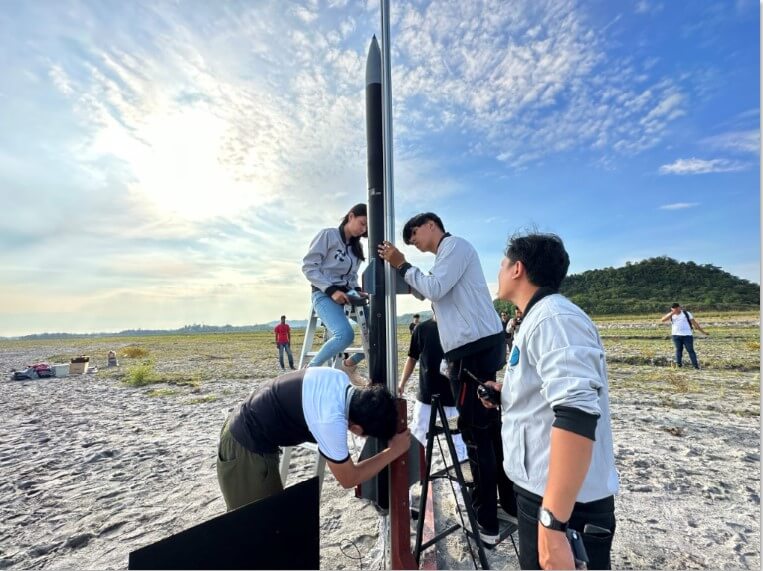
Contrary to most assumptions, not all young people are consumed by TikTok. In a refreshing twist, some of them are actively involved in research that aims to advance the country’s study of the atmosphere, like the students at St. Cecilia’s College Cebu, who recently launched the country’s first high-powered hybrid rocket.
In case you missed it, last month, the Philippines was able to successfully launch TALA up to five kilometers into the atmosphere from the Crow Valley Gunnery Range in Capas, Tarlac. Commissioned to deploy Can Satellite (CanSat) to the atmosphere, the rocket used both solid fuel and a liquid oxidizer, which made it safer and cheaper to handle, ship, store, and manufacture.
Here’s Everything You Need to Know About TALA
TALA was developed by homegrown space technology researchers, students, and teachers coming from St. Cecilia’s College in Cebu. The project began in 2018 as part of the Young Innovators Program of the Philippine Council for Industry, Energy, and Emerging Technology Research and Development, better known as the PCIEERD program of the Department of Science and Technology (DOST-PCIEERD).
Initially, the rocket, which measures 10 feet and weighs 15 kilograms, and was made from 3D-printed advanced composite materials, was scheduled to be launched in March 2020. However, because of the pandemic, it was moved this year after the TALA Team and PhilSA began working together for the refueling as part of the preparations for the official launch.
What makes TALA unique is the range of impressive components that it has, including its flight sensors, GPS capabilities, dual parachute deployment system, and payload system—which grants the ability to bring the CanSat up to approximately five kilometers into the atmosphere. As the TALA rocketry team mentor Almida Plarisan puts it: “CanSats are simulated satellites, the size of soda cans, developed and used in educational settings to remotely gather environment data through built-in sensors. Researchers in the country deploy CanSats through drones. Sending CanSats to higher altitudes via hybrid-propellant rockets is a cost-effective way to further enrich space R&D in the country.”
Following the successful launch, the TALA Team diligently retrieved the rocket body and is currently working on the crucial task of gathering and analyzing data to determine the rocket flight details. While it’s too early to presume, this momentous rocket launch may serve as the first step in the country’s capability to develop hybrid-propelled rockets that may invigorate space science and technology research, drive innovation, and propel advancement in the Philippines’ space asset for research, exploration, and commercial activities.
The momentous achievement of this historic launch owes its success not only to the dedicated students and mentors involved but also to the invaluable assistance provided by several key entities, including the Philippine Air Force of the Colonel Ernesto Ravina Air Base, the 710th Special Operations Wing, Air Force Research and Development Center, Air Force Systems Engineering Office, 950th Cyberspace and Electronic Warfare Wing, Air Force Public Affairs Office, and the 790th Air Base Groups.
May we continue to support the youth in their pursuit of this kind of endeavor—nurturing and encouraging them with their passion for innovation, exploration, and scientific advancement; enabling them to soar to greater heights and make extraordinary contributions to the Philippines.Despite how times have changed, maybe there still remains truth in the words of Dr. Jose Rizal: “The youth is the hope of our Fatherland.”